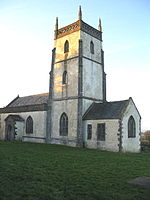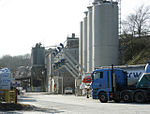Church of the Blessed Virgin Mary, Emborough

The Church of the Blessed Virgin Mary in Emborough, Somerset, England is medieval in origin but underwent extensive renovation in the 18th century. It is recorded in the National Heritage List for England as a designated Grade II* listed building. It is a redundant church in the care of the Churches Conservation Trust. It was declared redundant on 1 August 1978, and was vested in the Trust on 19 December 1979.It was originally built in the 12th century, with 14th and 18th-century alterations and some further restoration in the 19th century.The inside includes a Georgian gallery and a cast iron "Gurney Stove".The recent colour washing of the wall returned the church to its appearance before its Victorian restoration.
Excerpt from the Wikipedia article Church of the Blessed Virgin Mary, Emborough (License: CC BY-SA 3.0, Authors, Images).Church of the Blessed Virgin Mary, Emborough
B3114, Mendip Chewton Mendip
Geographical coordinates (GPS) Address Nearby Places Show on map
Geographical coordinates (GPS)
| Latitude | Longitude |
|---|---|
| N 51.26 ° | E -2.5538888888889 ° |
Address
B3114
BA3 4SG Mendip, Chewton Mendip
England, United Kingdom
Open on Google Maps







